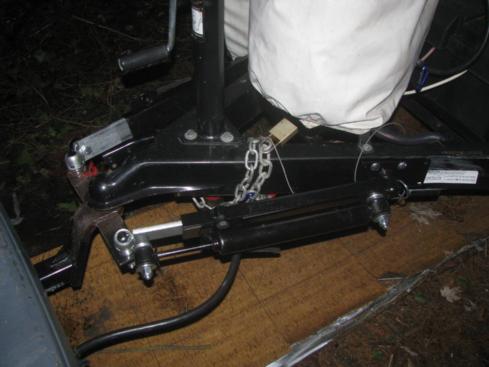The 2015 Jackknife Incident
In September we had bought a small travel trailer (RPod-177) and were towing it home from Dawson Creek via Jasper to Vancouver. On the way to Jasper we were driving on a section of highway 43 in Alberta. It's quite straight, but slightly downhill, about a 3% slope. The speed limit is 100kph, which is nominally what we were doing, but GPS shows we had sped up to 108kph downhill. The road surface was dry, and in good condition, but there was a bit of wind. Not enough that I would ordinarily remarked on it, however, and not enough to obviously affect the handling of the van (not requiring any steering corrections).
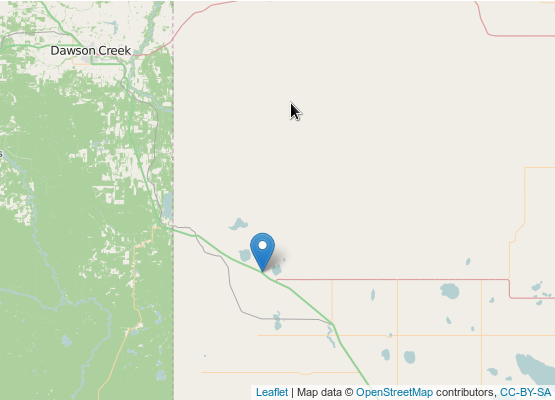
AB Highway 43
Earlier in the day, the trailer had swayed slightly from side to side, but the oscillations had always died away. As I descended the incline, the oscillations appeared and built up to a maximum amplitude of about +/- 90 degrees between the van and trailer. The immediate effect on the van was to cause it to fishtail down the road, and I responded as I would to fishtailing in snow - reducing throttle and steering in the direction of travel. Fortunately there was no other traffic and I was able to keep the vehicle on the tarmac and bring it safely to a stop on the hard shoulder, although it did cross into the westbound lane in the course of the event.


Skid marks, and trailer on the hard shoulder
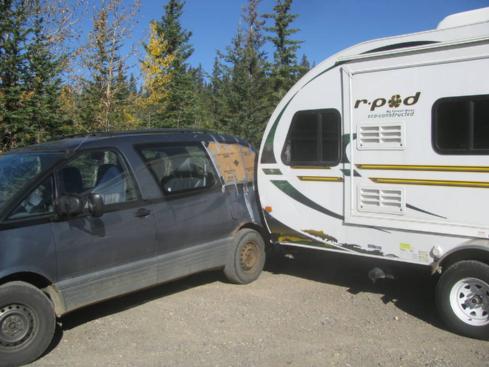
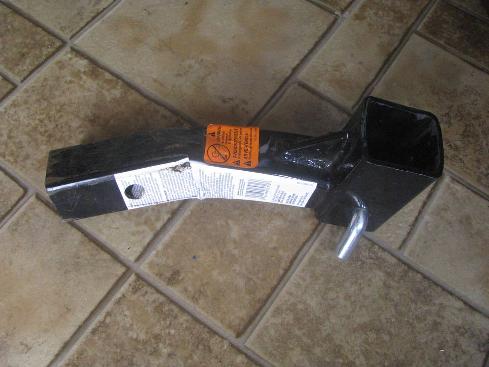
Reconstruction of the maximum amplitude jackknife; that's what
the hitch adapter looked like.
It was only after stopping that I realized what must have been happening to the trailer; I had been too busy steering the van to notice. The trailer had actually hit the van body on both sides, denting it and breaking the left side window. Both trailer tires had come off the rims. Skid marks on the road suggest the trailer had actually been travelling sideways down the road. I don't remember actually braking; the GPS data suggest a deceleration of about 3.6 m/s2 compared to some 2.4 m/s2 braking to a normal stop, so I presume I must have (I think full emergency braking would be about twice that deceleration).

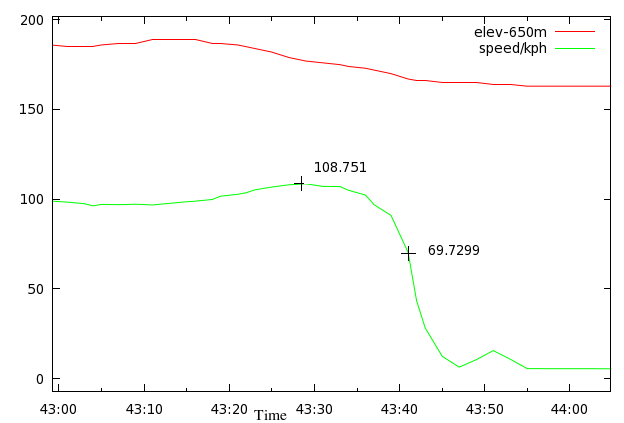
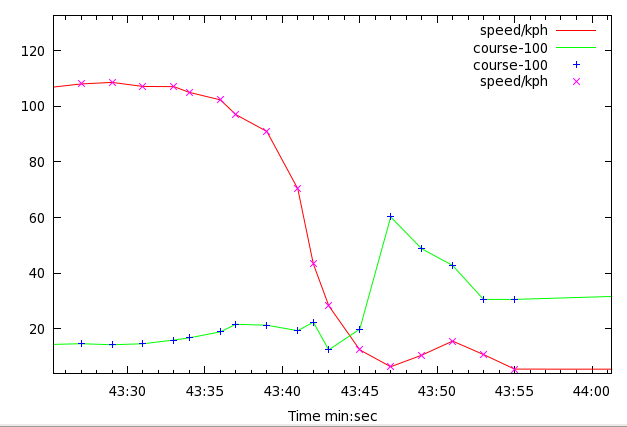
Plots of elevation and speed, from GPS track data. Time is in
minutes and seconds.

Map showing vehicles moving into oncoming lane
At the time of writing, I am still trying to understand the physics of the incident, particularly the feedback mechanism that led to the oscillations building up to full amplitude. Some online research (e.g. propride) following the event suggests several confounding factors:
- High speed
- A side wind, or gusty wind
- Descending a slope
- Coil springs on the tow vehicle
- A short wheelbase on the tow vehicle
- Underinflated tires on the tow vehicle
- A rear-mounted hitch (as opposed to an axle-mounted hitch, i.e. "5th wheel" or gooseneck design)
- Low tongue weight on the trailer
- Lack of an explicit damping device
- Standard springs and shock absorbers on the tow vehicle (as opposed to heavy duty stiffer ones)
The numbers
- Previa kerb weight: 1714 kg (from specifications)
- Previa length: 187" (from specifications)
- Previa wheelbase: 112.8" (from specifications)
- Previa unbraked tow weight: 600kg
- Previa braked tow weight: 1600kg
- Previa bumper to front wheel: 26" (as measured)
- Previa bumper to rear wheel: 42" (as measured)
- Previa front axle weight (unloaded, as measured): 1020kg
- Previa rear axle weight (unloaded, as measured): 890kg
- RPod axle weight (as measured): 1180 kg (unloaded, from specs): 1097kg
- RPod tongue weight (as measured): 90kg (from specs): 111kg
- RPod length (from specs) 224"
- RPod GVWR: 1698 kg CCC: 601kg
- RPod axle to rear (as measured): 84"

Recovery/Mitigation
Recovery went something like this: I unhooked the trailer from the van and removed both wheels, replacing the one with a damaged tire with the spare. I then drove back up the road to FasGas (the nearest gas station), where after using a fair bit of soap from the washroom and feeding a lot of dollars into the compressed air station I was able to pop the other tire back on the rim. I also got some cardboard and duct tape to fix the broken window on the van, and checked and inflated the van tires to nominal pressure (they'd been a bit low). Then back to the trailer (left parked at the side of the road) to re-install the wheel and hook it back on the van. The original hitch riser had been turned into somewhat of a pretzel in the incident, but we had the original lower hitch adapter (used for a bicycle rack) so used that. Everything was basically still drivable, though I had to push out the van fender above the rear wheel (with the tire jack) since it was hitting the wheel over bumps. All this took enough time that we missed a trip to the museum we'd planned that afternoon.
After reading some of the above information online on my phone, we went to Princess Auto in Grande Prairie and picked up a new high hitch adapter. I also found a friction damper intended for trailers up to 5000lbs which seemed like a good idea, so I bought that, but on examination it turned out to require welding a tongue to the hitch. It also appeared that the lights on the trailer had stopped working, so we bought some battery-powered lights and fixed them on with duct tape, and spent the night in a campground outside Grande Prairie (the original plan, perhaps somewhat ambitious even without incident, had been to drive to Jasper in one day).
We then drove to Jasper, spending another night on the way, and
I looked for a welding shop. It turned out that there were no
commercial businesses in Jasper (which is in a national park), only
tourist facilities, but there were several in Hinton, back
the way we had come. So we drove back to Hinton, and got
the tongue welded on, quite quickly and cheaply and nicely done.
Then we camped out at a Canadian Tire store and proceeded to install
the damper, which involved buying a cordless drill and
drilling some holes. I also found that the wires to the hitch socket supplying
the trailer lights had become cut in the collision of the trailer
and van, when a piece of bumper had become pushed against the
van frame. I was able to buy some wire and bypass the bad section, restoring
the lights
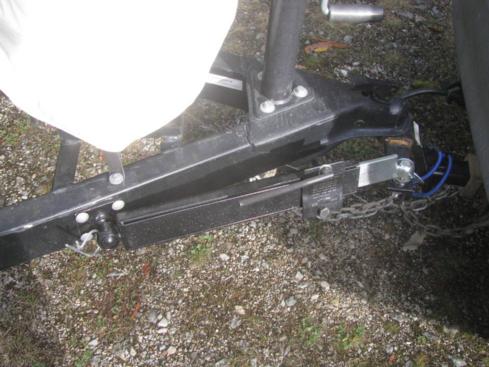
Friction damper
On returning home - or at least, after a few weeks delay - we
tried to get the van repaired. We tried a couple of commercial body
shops and were told that it was not insurable - there was too much rust
on the body panels to bendtham, and in any case they would normally replace
the entire side panels and that the cost would far exceed the insured value
of the vehicle. But the van was still drivable, albeit with a broken window
that could not be replaced because the frame was bent. I took the
inside of the van apart and used a jack with a piece of wood as a brace to push out the body panel. My original idea was to bend it out well enough to
screw a piece of polycarbonate across the window to get a weatherproof seal.
In the event I manage to push the window frame just about straight,
so I could probably get a replacement glass. But I'd alreadly bought the
polycarbonate, so now it has a polycarbonate window, a bit thinner than
one might like, but keeping the rain out. The body panels are still
somewhat crumpled - I didn't bother taking the right hand side
apart, and portions of the left side were covered by internal bracing
making it hard to push directly with the jack.

After reading the research papers from the University of Bath, I
found that in their view a friction damper is only effective at
suppressing low-amplitude oscillations, not high-amplitude oscillations. So
it might actually make matters worse by allowing the sudden onset of
large oscillations with no warning. I assumed that a velocity-dependant
damper (a normal fluid damper as used in a car shock absorber) would be
better. I had replaced the rear shock absorbers in the van with new stiffer
ones (one of the confounding factors was worn shock absorbers), so
I had a pair of still-functioning shocks to experiment with. I also
wanted to try and replicate some of the Bath results. I made a data logger
with a Beaglebone Black single-board computer, and a potentiometer
to measure the hitch angle, and also bolted the shock absorber in parallel
with the friction damper - the damper has the required ball joints
on the trailer and hitch. The damper combination seemed to work
quite well, or at least it was practical. The data logging, not so much.
I initially had trouble synchronizing the time because
the Beaglebone has no built-in battery clock, Nevertheless I was
able to do a series of tests at ddifferent speeds and try to induce
oscillation, and at least prove that the combination was stable at
speeds up to 90kph. The weather had turned somewhat wet, so I gave up.
It was also hard to find suitable stretches of road near Vancouver to do high-speed
tests.
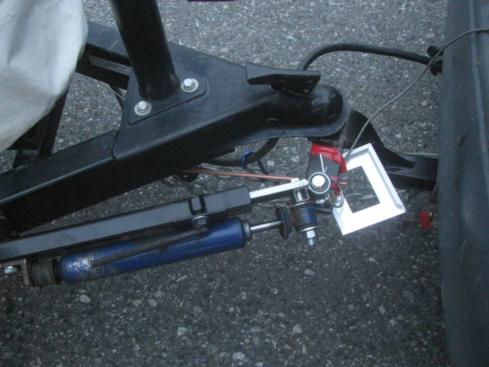
Fluid damper prototype and hitch angle
instrumentation

Plot from data logger showing hitch angle and 2-axis acceleration
(as recorded by an Android tablet in the caravan)
Following the apparent success, or at least proof of concept, of
the hydraulic damper I bought a new one from an auto store, given
my desired dimensions. This turned out to be a steering damper for a 1-ton
truck. Since a single damper did not give adequate stiffness, I
decided to replicate the assembly on the other side, as recommended by
the friction damper vendor for heavier trailers. So after more
welding, the current assembly has two friction dampers
both with fluid dampers in parallel.
